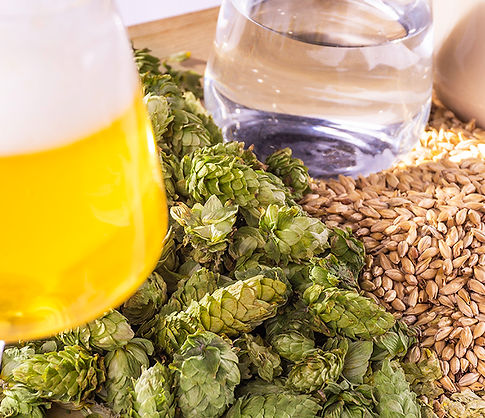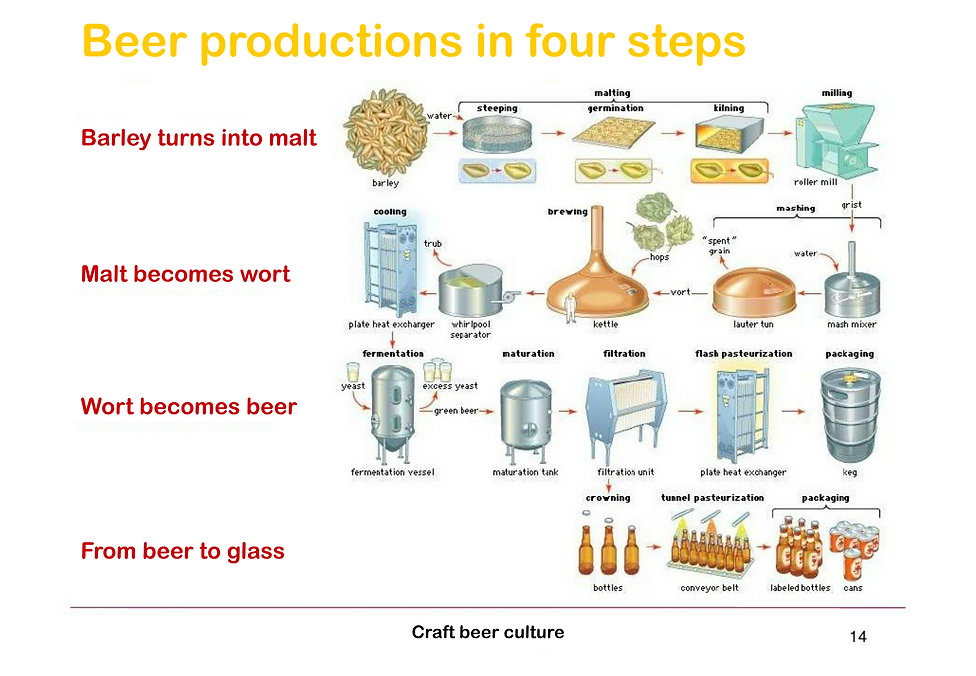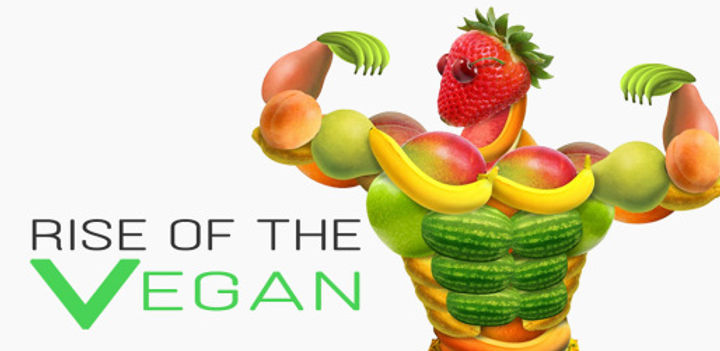
why choosing a vegan wine?
3 important aspects you should know.
The “vegan” sections on the supermarket shelves are constantly increasing, as in shops and restaurants. There is more and more choice of food without animal derivatives: the vegan world is beginning to increase supporters and consensus at national and international level.
Doing your shopping, have you ever wondered why you should choose a vegan wine?
Here are three aspects, you should take into account: the vineyard, the cellar and the table.
1. In the vineyard the territory is respected in order to preserve the soil-biodiversity.
A wine that respects the environment and animals has an added value. Everything is green-oriented and without animal derivatives, from the fertilization phase to the final packaging.
The vineyards are worked in full respect of soil: this is very important to obtain healthy and quality grapes, preserving the soil in order to promote the proliferation of microorganisms, that make the soil fertile and allow plants to grow healthy and strong, preserving it from disease. The use of polluting phytosanitary products is not allowed, so that the environment is protected and the physical structure of the vine too. The vineyards are constantly taken under control by specialized agronomists, who take care of plant development according to its natural cycle.
2.In the cellar, the vegan principles are respected throughout all the production phases.
The clarifying agents generally used in winemaking may contain animal derivatives, like casein or albumin, from milk and egg respectively. These components can be replaced by vegetable yeasts. Moreover, wine is refrigerated in order to activate the stabilization process, i.e. the natural gravitational sedimentation of small particles, that make the wine turbid.
The total absence of substances of animal origin, in all the wine tanks and in the materials used to make the final product, allows to obtain the Vegan certification.
3. A good quality-price ratio for a healthy wine.
Although the care and attention is much higher in a vegan vineyard than in a conventional one, prices are kept low. A wine with a good quality-price ratio, rich in natural scents, given by vigorous and natural grapes, is healthier, more digestible and above all … does not cause headaches!
In short, buying a vegan wine is a choice not only of those, who follow a vegan diet but also of those, who love to respect the territory and animals.
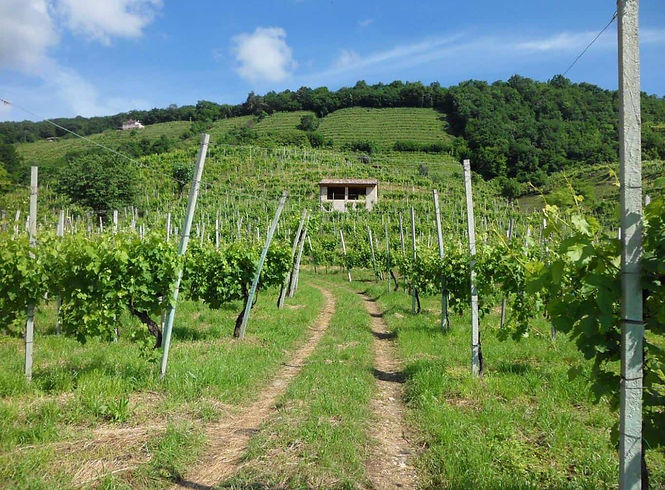
the organic viticulture
The soil management of the grounds of an organic vineyard is one of the key factors to ensure the preservation of the agricultural ground and of its fertility and, simultaneously, the maintenance of the lives in an optimal balance for the production of quality organic grapes. This is one of the main points that characterize the agriculture and, therefore, also the organic viticulture.
The management of the grounds have a series of effects on the ecosystem of the vineyard that is fundamental in organic cultivation. Things to keep in mind are the following:
-
Organic complexity;
-
Erosion, a big problem on hills;
-
The physical and chemical features of the organic ground.

Perlage is widely focusing on biodynamic viticulture, that definitely help the organic procedures to become more efficient. Some important modern techniques that Perlage uses in Vineyards are:
-
The permanent grass cover of the soil that can be adapted to different climatic conditions, the needs of the vines, such as the erosion containment and the protection of the soil fertility;
-
The reduction on copper use in vineyards because it restricts the development of useful microorganisms;
-
The installation of some weather station-climate on the vineyard that controls the existence and development of the disease and activate the treatment only when necessary;
-
Use of useful organism, such as biodynamic agriculture teaches, to increase the resistance of the plant to the disease.
An important attention to the vineyard help to obtain excellent results in the winery: first of all the reduction of sulfites in the vinification and the wines. The greatest result of this huge work is “Animae”, the Prosecco Spumante Superiore DOCG without sulfites, the first of the kind in 2008 and now one of the 10 best Proseccos according to Baudains in Decanter magazine.
grapes variety
GLERA
Conegliano Valdobbiadene Prosecco Superiore DOCG, made with Glera grapes, is a rustic and vigorous white grape variety with hazel shoots and rather large and long bunches featured by golden yellow berries. The Charmat method (sparkling winemaking method) enables to get the "Brut, Extra Dry and Dry" versions from this variety, which stands out for its straw-yellow colour, its mild thickness and its fruity and flowery scent. Conegliano Valdobbiadene Prosecco DOCG wine is produced exclusively in the area of Treviso, in a limited spot.
MERLOT
Merlot is a black grape variety, whose name comes from the particular fondness that blackbirds (or "merlo" in Italian) have for its berries. Its colour is ruby red or garnet when it is aged. Its typical and pleasant scent reminds of blueberries or raspberries, however it is less varied and pleasant if it is aged. Its flavour is mildly dry or semi-dry, tangy, robust and rightly tannic.
PINOT GRIGIO
This wine is produced from the homonymous grape and it can be enriched with different grapes. It is firmly structured and elegant at the same time. It is featured by a pleasant deep straw-yellow colour with coppery nuances given by its fermentation with skins. Its scent is flowery and fruity with deep apple and elder hints. Its fresh and velvety pineapple and orange peel nuances are wellperceived when tasted.
CABERNET
Cabernet wine is produced with grapes coming from Cabernet Franc, Cabernet Sauvignon or Carmenere varieties, separately or jointly. It is featured by a red ruby colour, which becomes almost orange, brick or garnet after its ageing as well as by a deep vinous, grassy and pleasant scent. Its flavour is dry, round, rightly sour and tannic.
CHARDONNAY
This is one of the greatest white grape varieties in the world and it represents the main element of the grape mix used for the most famous sparkling wines. Chardonnay golden bunches, coming from Bourgogne, settled down very well in Veneto region and are featured by a vast variety of aromatic components, a straw-yellow colour and a deep and fruity scent. It is pleasant to taste and featured by a dry and tangy flavour.
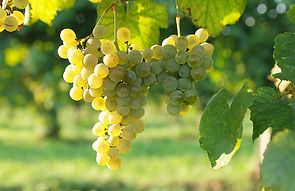
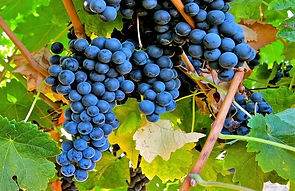
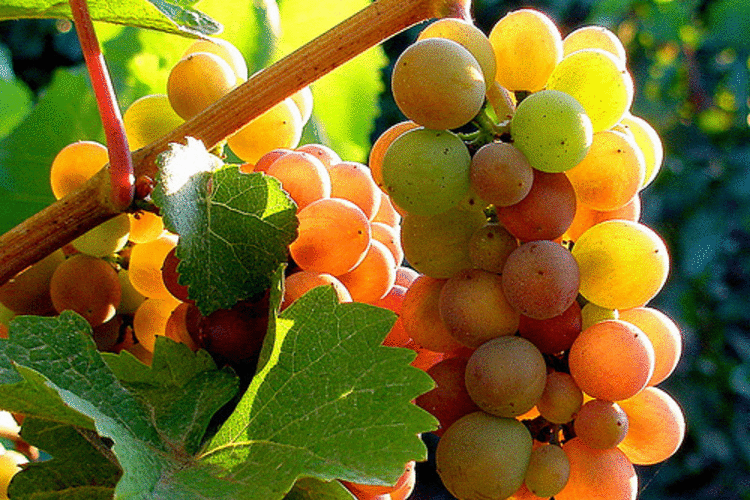


INCROCIO MANZONI
Its name originates from Mr Luigi Manzoni who had the idea to cross two grapes such as Riesling Renano and Pinot Blanc at the wine school of Conegliano. This sparkling wine is featured by a strawyellow colour and a fruity and flowery scent. Its taste is aromatic and elegant with a pleasant hint of white peach and almond.
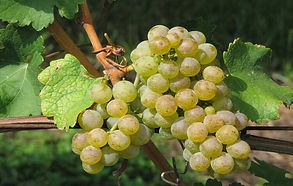
classical method/ ranciacorta method
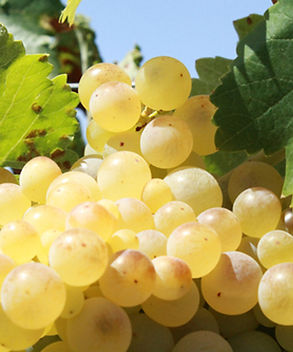
Franciacorta La Montina is produced in accordance with the strict laws laid down by the ‘Consorzio Vini Franciacorta‘ (the body responsible for regulating the production and maintaining standards) of which it is a part. The laws governing the wine are the strictest in the world relating to the production of “Metodo Classico” (The Champagne or traditional Method) sparkling wine.
These rigid guidelines are designed for absolute quality.
The production of Franciacorta demands only the use of noble grape varieties, (Chardonnay, Pinot Noir and Erbamat for the white and Pinot Bianco for the red) and these must be hand harvested in baskets with a capacity of 18-20 kg.
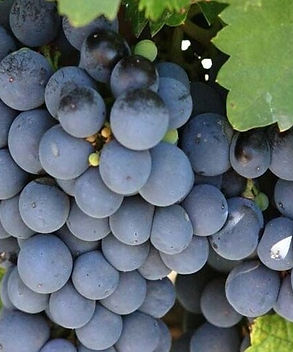
Its key characteristic is derived from the natural second fermentation in the bottle and the subsequent slow maturation and refinement on the lees (dead yeast cells). This period of maturation must be no less then 18 months for the non-vintage wine,
30 months for the vintage and at least 60 months for the Riserva. The harvest, completed manually without affecting the grapes maturation, starts at the beginning of August allowing the grapes to maintain high acidity.
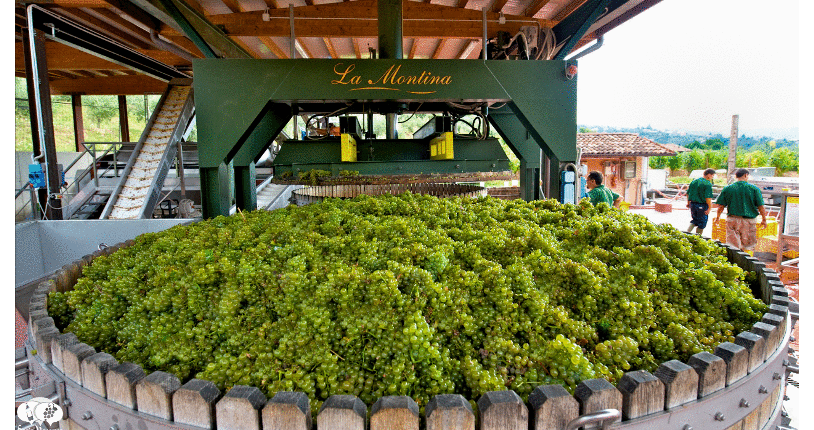
Since 1999 Gian Carlo Bozza and the winery staff have been using a unique vertical ‘Marmonier’ press constructed by local artisans and friends of the La Montina estate. The aim is to maximise the quality of the juice during the pressing and the use of this special press is extremely rare in Franciacorta, in fact it is one of only two available in the whole region. This type of mechanical press takes advantage of the full width of the vessel which has a diameter of 3 metres but a height limited to only 120 cm, to reduce the outflow time of the must and yet achieve a very soft pressing without breaking the skins and with a yield of 35%-40% juice. This soft pressing allows the berries to maintain all of their phenolic qualities which would largely be lost through an excessive, violent pressing.
The entire area devoted to the press is deliberately located above the winery so as to exploit the use of gravity to transfer the must, thus eliminating the need for pumps.
Depending on the grape variety, type of pressing and location of the original vineyard, the different musts are then divided between steel tanks and ‘barriques’ where they undergo the first fermentation.
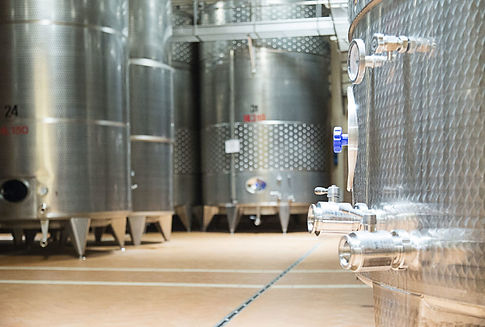

Almost seven months after the vintage, the base wines are carefully selected and bottled for the ‘tiraggio‘, the process of adding yeast and sugar to the bottle which in turn kick-starts the second fermentation. Once tightly sealed, the bottles are carefully transferred to the cellar where they are manually laid down in large stacks and left to rest.In the dark silence of the vault, the second fermentation starts and transforms the sugars into alcohol and carbon dioxide which creates the bubbles, the unmistakeable characteristic. In this particularalyy conditions, inside bottles pressure can reach almost 7 atmospheres
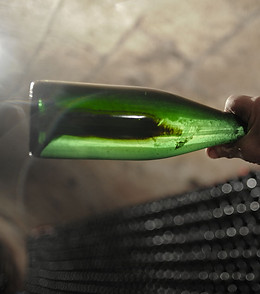
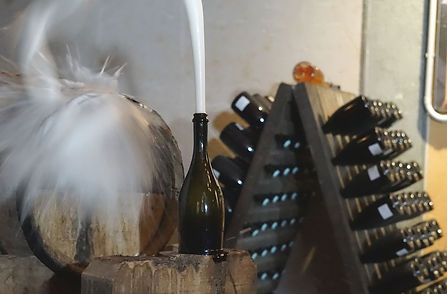
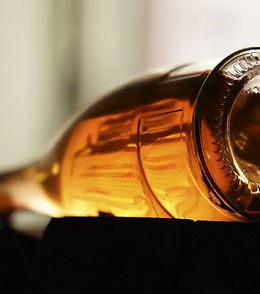
After a long period of maturation on the lees, not less than 18 months (The non vintage Satèn and Rosé wines spend 24 months maturing, the vintage wines 30 months and the Riserva 60 months), ‘Remuage‘ ensures. This is the process by which the sediment is gently encouraged to slide down the bottle to the neck where it is eventually expelled by ‘dégorgement‘. This is a mystical process unique to the traditional method of production and at one time was an indication of the skill of the cellar master who with a lightening quick snap of the wrist removed the cap, whilst loosing as little wine as possible. Today, thanks to the wonders of modern technology, the sediment is frozen solid by immersing the neck in a solution which freezes it to -28 degrees enabling its expulsion without the loss of the precious wine. At this point the ‘liqueur d’exposition‘ is added. This is a sticky syrup composed of selected wines and sugar in variable concentrations depending on the final style of the wine, whether it be Extra Brut, (very dry), Brut, (dry) or Demi Sec, (medium dry). When the ‘liqueur’ is not added the wine is characterised as Pas Dosé.
Pas dosé or Dosaggio zero: < 3 g/l
Extra brut: ≤ 6 g/l
Brut: < 12 g/l
Extra dry: 12-17 g/l
Dry o Sec: 17-32 g/
Demi sec: 33-50 g/l
Finally, the bottle is sealed with the distinctive anchored cork followed by a wire mesh and sleeve.

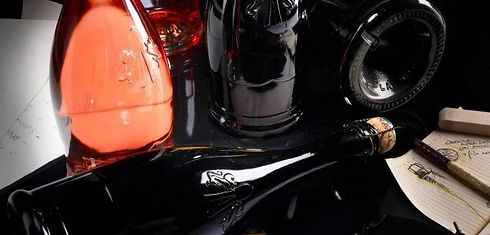
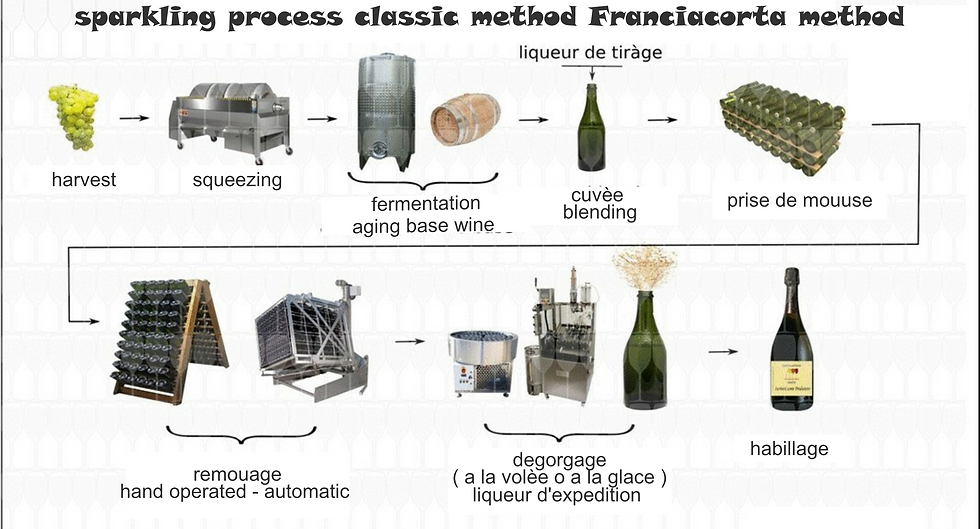
prosecco-charmat-sparkling method
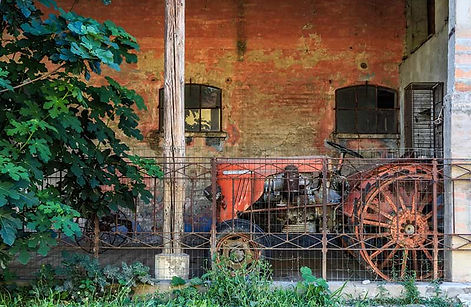
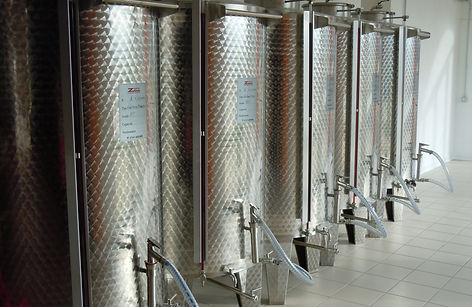
The Charmat Method is one of four main methods of producing sparkling wine. The bubbles in sparkling wine are created with this method by inducing a second fermentation in the wine while it is sitting in pressurized stainless steel tanks. The Charmat Method is popular in Italy, where it is called Metodo Martinotti; and was adapted in France in 1907 by Eugene Charmat to become the Charmat Method The Charmat Method is best for aromatic grapes, as it doesn’t mask the fruity nature of the wines.
The Charmat Method goes by many names: tank method, cuvèe close, Metodo Martinotti, Metodo Charmat-Martinotti and Italian method, to name a few. The Charmat Method produces larger quantities of sparkling wine and allows for greater quality control so that the resulting wines are consistent as well as sparkling, which is why this method is the most popular way to make sparkling wine.
The process involves allowed primary fermentation to run its course, after which, the winemaker induces a secondary fermentation with a mixture of yeast and sugar and seals the wine in a stainless steel tank to trap the CO2 inside (which makes the bubbles). How long the CO2 is trapped in the wine dictates how bubbly the final product will be – frizzante (slightly bubbly) is left for 20 days to three months; Cuvée and Prestige wines are left for up to six months.
Once second fermentation is complete, the wine is filtered and fined to remove the lees and sediment. Another mixture of sugar and wine is added to preserve the bubbles; this final mixture dictates if the wine is called Brut, Demi-Sec or Sec. Finally, the wine is ready to be bottled under pressure

craft beer secrets
how is produced and how to identify the best
Do you know Craft-Arisanal beer?
In recent years, the "good habit" of drinking craft beer has spread, for amateurs and the simply curious, it has become increasingly simple, even producing beer at home. Anyone can buy a craft beer kit online or in specialty stores. Thanks to the forums, e-commerce, Facebook groups, the knowledge, the practices, the equipment to make beer at home, it is not difficult to make a small home brewing, buying all the tools and ingredients for cooking and fermentation, the difficult thing is to obtain a constant product over time. That is why, at the end of the test, it is better to turn to the microbrewery of trust, increasingly able to express reliability, experience, traceability. The quality of the products offered on the market has risen considerably and it is in Italy that some of the beers that have won important international awards were born.
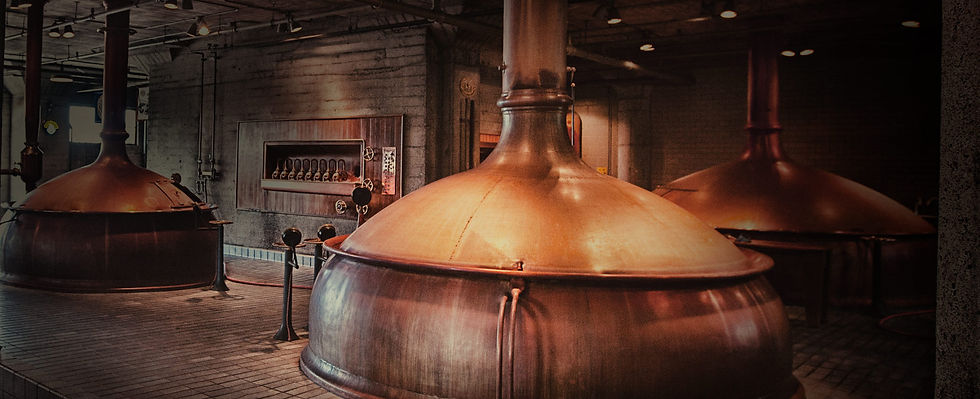
How to produce craft beer
Basically, beer is a fermented cereal-based beverage. The artisan one, in addition to the various additions of individual recipes, must contain ... water, barley malt, yeast and hops ... is not pasteurized and without extracts or preservatives.
Behind every good glass of beer we drink there is a long working process.
Even today it is still a natural process like many centuries ago,perfected by experience, knowledge and modern technological tools. Let's see, step by step, how four simple and very common elements in nature such as barley, water, hops and yeast, combined and processed together, manage to create the oldest and most appreciated drink in the world.
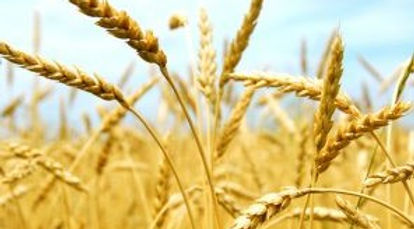
Barley turns into malt
We start with barley, the most cultivated and widespread cereal in the world.
The best quality is chosen, whose grains are put in water to germinate until they reach the necessary humidity and germinate for a few days.
Sprouted barley is called malt. The malt is then dried slowly in the oven.
Depending on the degree of toasting, it will reach a colour (blond, golden or biscuity) and a different fragrance, which will then influence the appearance and taste of the beer.
Malt becomes wort
The barley malt is ground and reduced into flour, then mixed with water in a boiler until it becomes a homogeneous mixture, called wort. At this point the wort is brought to a boil, filtered and separated from the barley malt slag. At this stage hops are added, a plant that gives to the beer its characteristic bitter taste. The must is then cooled before moving on to the fermentation stage.
Wort becomes beer
The must is left to ferment in special containers. Indispensable at this stage is the role of the
yeast, capable of transforming the sugars present in the must into alcohol and carbon dioxide. Without the addition of yeast, in fact, the wort could not become beer.
The two large yeast families used for this purpose are Saccaromyces
Cerevisiae and Saccaromyces Carlsbergensis. Exceptions to this rule are some rare beers, produced in a place in Belgium, which ferment spontaneously using a yeast present in the air in that area.

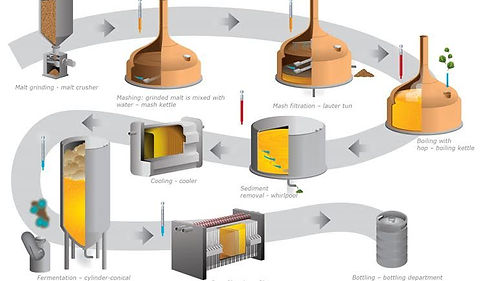
Top and bottom fermentation
Saccaromyces Cerevisiae is used to produce the so-called "high fermentation" beers and works at high temperatures (16-23 degrees centigrade);
Saccaromyces Carsbergensis is used for "low fermentation" beers and works at low temperatures (between 5 and 8 degrees centigrade).
Depending on the type of beer you want to get you decide whether to use the first or second family of yeast.
Usually the high fermentation method gives rise to beers with an intense and aromatic taste, while low fermentation produces beers with a light and fragrant taste.
Seasoning and maturing
After fermentation the beer is racked into special tanks where it will be left for four to six weeks to mature and mature.
In this phase all its components are refined, stabilized and decanted on the bottom of the tank.
A sort of natural clarification takes place and the beer acquires its characteristic and definitive tastet Most beers are then further filtered to remove any traces of yeast and other components that would make the drink cloudy.
The beer is now practically ready to be packaged and then consumed.

Packaging
The last,but not least beer production stage is packaging,. Only if you operate correctly and with the utmost care, in fact, the beer can reach the consumer with its original qualities intact.
The dark, brown or green glass bottle remains the optimal material to preserve the characteristics of beer over time and protect it from the negative effects of light. The metal crown cap, practical and safe, is the one that perfectly guarantees airtightness, but cork, ceramic and rubber or screw caps are also used for bottles with a particular meaning. The can, which is light, comfortable, easy to transport, store and open at any time and place, is also highly appreciated by some consumer groups. The barrel, very capacious (25-30-40 litres), is used mainly by public establishments for the tap service, which has its own large number of passionate consumers. The beer packaged in this way is very fragrant and delicate.
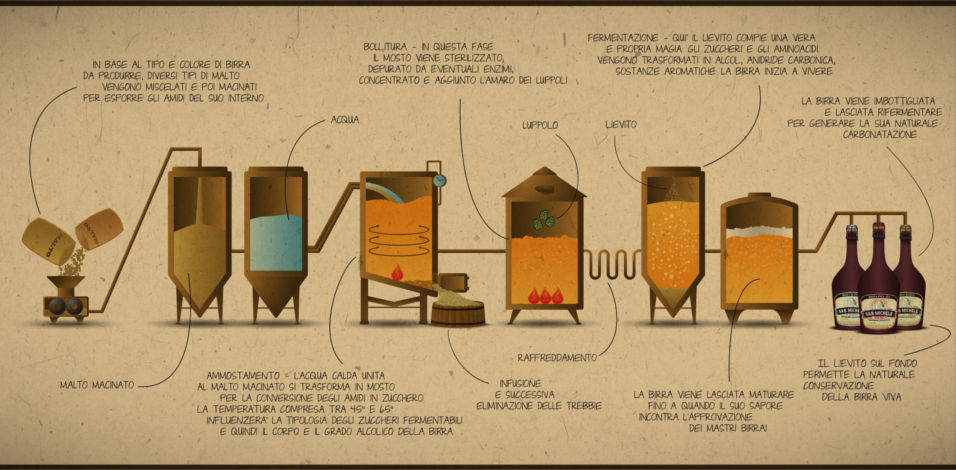
How to identify a good craft beer
1) Number of bottles produced
Craft beers are produced in limited quantities. As is the case with wine, often where the lower the production, the higher the quality.
Clearly not on all bottles it is easy to see the indication of the lot and the production quantity, so it comes into play as the availability, the exclusivity of a product.
2) Presence of natural ingredients
A beer made with natural ingredients, possibly from traceable producers or organic crops, is genuine.
3) Balanced Beers
Beyond personal tastes, whether you like white or dark beers, strong or light, balance is a distinction that guarantees horizontally with respect to the quality of a product. The balance is achieved in the continuous dialogue between the senses involved during beer tasting. Finally, a balanced beer is also a beer that has fully completed its fermentation processes.
